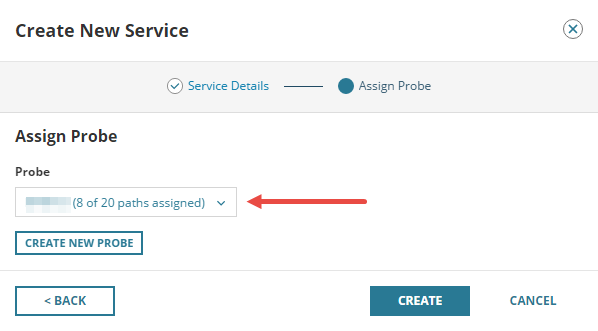NetPath requirements
Review the following requirements for NetPath™:
Probe computer
Probes are the source of network paths, and the paths are discovered by probes.
You create a probe on a source computer, which must meet the following requirements:
| Type | Requirements |
|---|---|
Operating system (64-bit only) | Windows Server 2025 Windows Server 2022 Windows Server 2019 Windows Server 2016 Windows 11 Professional and Enterprise Windows 10 Professional and Enterprise Windows 10 Home edition is not supported. |
| CPU cores | 2 CPU cores for 20 paths +1 CPU core per 10 additional paths |
| Hard drive space | 1 GB |
| RAM | 2 GB |
Ports and other firewall settings
Open the following ports on your firewall for network connectivity used by NetPath™. Review other firewall settings.
Ports
You may also need to open the following ports:
- NPM ports for communication between polling engines.
- Agent ports when deploying probes on remote machines using agents.
| Port | Protocol | Service or Process | Direction | Source | Destination | Description |
|---|---|---|---|---|---|---|
| User configured | TCP | SolarWinds Agent or JobEngineWorker | Outgoing | NetPath™ probe | Endpoint service | Any ports of the monitored services that are assigned to the probe. Used by the NetPath™ probe to discover service status. |
43 443 | TCP | SolarWinds.BusinessLayerHost (Main server only) | Outgoing | Main polling engine | BGP data providers and announcements, such as:
| Used by NetPath™ to query BGP information about the discovered IP addresses. |
Other firewall settings
| Setting | Protocol | Service or Process | Direction | Source | Destination | Description |
|---|---|---|---|---|---|---|
Allow ICMP type 11 (ICMP Time Exceeded) | ICMP | SolarWinds Agent or JobEngineWorker | Incoming | Networking devices along your path | NetPath™ probe | Used by the NetPath™ probe to discover network paths. |
Database storage
When calculating the size requirements in SQL Server for NetPath™, you must account for the probing interval and the complexity of the network path from the probe to the monitored service. The complexity of the path is divided into three groups:
- Internal: services with fewer than 10 nodes between the probe and the monitored service.
- Intermediate: multiple paths ending in a single endpoint node. Examples are github.com, linked.com, and visualstudio.com.
- Complex: multiple paths (over 20) ending in multiple endpoint nodes. Examples are google.com and yahoo.com.
This table provides an estimate in megabytes (MB) of the amount of storage consumed by SQL Server over a 30-day period (the default retention time) when monitoring a single service.
| Interval (in minutes) | Internal (in MB) | Intermediate (in MB) | Complex (in MB) |
|---|---|---|---|
| 1 | 520 | 1105 | 1615 |
| 2 | 325 | 645 | 1145 |
| 3 | 200 | 445 | 915 |
| 4 | 170 | 350 | 750 |
| 5 | 135 | 265 | 480 |
| 10 | 80 | 175 | 470 |
Example storage requirement calculation
Your monitoring setup contains the following:
- Five internal monitors with a one-minute interval.
- Three intermediate monitors with a five-minute interval.
- Four complex monitors with a ten-minute interval.
The total storage requirement for SQL Server can be calculated as:
(5 × 520) + (3 × 265) + (4 × 470) = 5275 MB over a 30-day time period.
Cloud environment
When you place a probe in a public cloud, consider the following additional requirements:
| Provider | Requirements |
|---|---|
| Amazon |
|
| Azure |
|
Scalability
The scalability of NetPath™ depends on the complexity of the paths you are monitoring, and the interval at which you are monitoring them.
In most network environments:
- You can add up to 100 paths per polling engine.
- You can add up to 1,000 paths per SolarWinds Platform instance.
- You can add 10 - 20 paths per probe.
NetPath™ calculates the recommended path count based on the performance of each probe, and displays it each time you deploy a new path to the probe.

